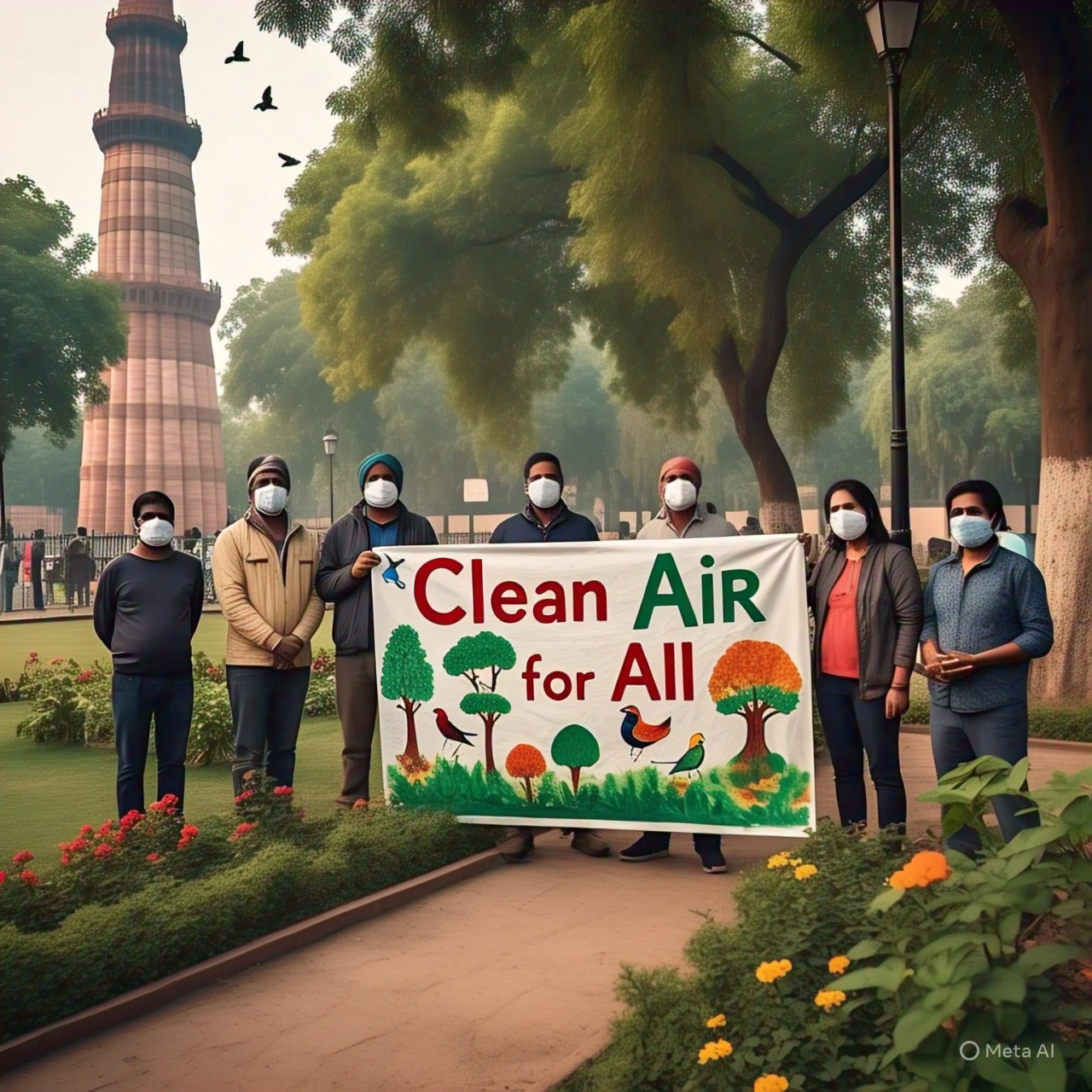Delhi Government Approves Cloud-Seeding Trials to Combat Air Pollution: A Step Towards Cleaner Skies?
The Delhi government has taken a significant step towards combating air pollution in the city by approving cloud-seeding trials. This innovative approach aims to induce artificial rain to reduce the alarming levels of air pollution that have become a perennial problem in the national capital. In this blog, we will explore the concept of cloud seeding, its potential benefits, and the science behind it.
What is Cloud Seeding?
Cloud seeding is a form of weather modification that involves injecting substances like silver iodide, dry ice, or salt into clouds to enhance precipitation. The idea is to stimulate the natural process of rain formation by introducing nuclei that allow water droplets in the clouds to condense and fall as precipitation. Cloud seeding has been used in various parts of the world to enhance rainfall, mitigate hailstorms, and even combat droughts.
The Science Behind Cloud Seeding
Clouds are formed when water vapor in the atmosphere condenses onto tiny particles like dust, salt, or pollutants. In a natural process, these particles act as nuclei, allowing water droplets to form and grow. Cloud seeding introduces artificial nuclei into the clouds, enhancing the process of precipitation formation. The most commonly used seeding material is silver iodide, which has a crystal structure similar to ice. When introduced into clouds, silver iodide particles stimulate the formation of ice crystals, which eventually grow heavy enough to fall as precipitation.
How Will Cloud Seeding Help Combat Air Pollution in Delhi?
Delhi's air pollution problem is a complex mix of vehicular emissions, industrial pollution, construction dust, and agricultural burning. Cloud seeding offers a potential solution to reduce the concentration of pollutants in the air. Here's how:
- Rainfall reduces particulate matter: Rainfall can wash away particulate matter, including PM2.5 and PM10, which are major contributors to Delhi's air pollution.
- Decreases pollutant concentration: Rainfall can dilute the concentration of pollutants like nitrogen dioxide, sulfur dioxide, and ozone, reducing their impact on human health.
- Suspension of dust particles: Rainfall can help settle dust particles, reducing the amount of suspended particulate matter in the air.
The Delhi Government's Cloud-Seeding Trials
The Delhi government's decision to conduct cloud-seeding trials is a proactive step towards exploring innovative solutions to the city's air pollution problem. The trials will be conducted in collaboration with experts from the Indian Institute of Technology (IIT) Delhi and the Indian Meteorological Department (IMD). The government has identified specific areas in Delhi where cloud seeding will be conducted, and the trials are expected to run for several months.
Potential Benefits and Challenges
While cloud seeding offers a promising solution to Delhi's air pollution problem, there are potential benefits and challenges to consider:
Benefits:
- Reduced air pollution: Cloud seeding can help reduce the concentration of pollutants in the air, improving air quality and public health.
- Enhanced rainfall: Cloud seeding can stimulate rainfall, which can help replenish groundwater resources and reduce the impact of droughts.
- Economic benefits: By reducing air pollution, cloud seeding can have positive economic impacts on healthcare, tourism, and productivity.
Challenges:
- Uncertainty: Cloud seeding is not a guaranteed solution, and its effectiveness depends on various factors like cloud type, temperature, and humidity.
- Cost: Cloud seeding can be a costly affair, requiring significant investment in equipment, personnel, and research.
- Environmental concerns: Cloud seeding raises concerns about potential environmental impacts, including the effects of silver iodide on human health and the ecosystem.

Conclusion
The Delhi government's decision to approve cloud-seeding trials is a step towards exploring innovative solutions to the city's air pollution problem. While cloud seeding is not a silver bullet, it offers a promising approach to reducing air pollution and improving air quality. As the trials progress, it is essential to monitor their effectiveness, assess potential environmental impacts, and consider the economic viability of this technology. By embracing innovative solutions like cloud seeding, Delhi can take a significant step towards achieving cleaner skies and a healthier environment for its citizens.
Frequently Asked Questions
Is cloud seeding a proven technology?
Cloud seeding has been used in various parts of the world, but its effectiveness is still a topic of research and debate. While some studies have shown positive results, others have raised questions about its efficacy.What are the potential environmental impacts of cloud seeding?
Cloud seeding raises concerns about the effects of silver iodide on human health and the ecosystem. However, research suggests that the amounts used in cloud seeding are unlikely to have significant environmental impacts.Can cloud seeding provide a long-term solution to Delhi's air pollution problem?
Cloud seeding is not a long-term solution to Delhi's air pollution problem. It can, however, be a useful tool in reducing air pollution levels in the short term. A comprehensive approach to address the root causes of air pollution, including vehicular emissions, industrial pollution, and agricultural burning, is essential for achieving sustainable improvements in air quality.
Recommendations
- Conduct thorough research: The Delhi government should conduct thorough research on the effectiveness of cloud seeding in reducing air pollution levels in Delhi.
- Monitor environmental impacts: The government should closely monitor the potential environmental impacts of cloud seeding, including the effects of silver iodide on human health and the ecosystem.
- Integrate cloud seeding with existing policies: Cloud seeding should be integrated with existing policies and initiatives aimed at reducing air pollution levels in Delhi.
- Engage stakeholders: The government should engage stakeholders, including citizens, experts, and industries, to raise awareness about cloud seeding and its potential benefits and challenges.
By adopting a comprehensive approach to address air pollution, Delhi can take significant steps towards achieving cleaner skies and a healthier environment for its citizens. Cloud seeding is just one of the many innovative solutions that can be explored to mitigate the city's air pollution problem. As research and trials progress, it is essential to evaluate the effectiveness of cloud seeding and its potential role in Delhi's air pollution mitigation strategy.
